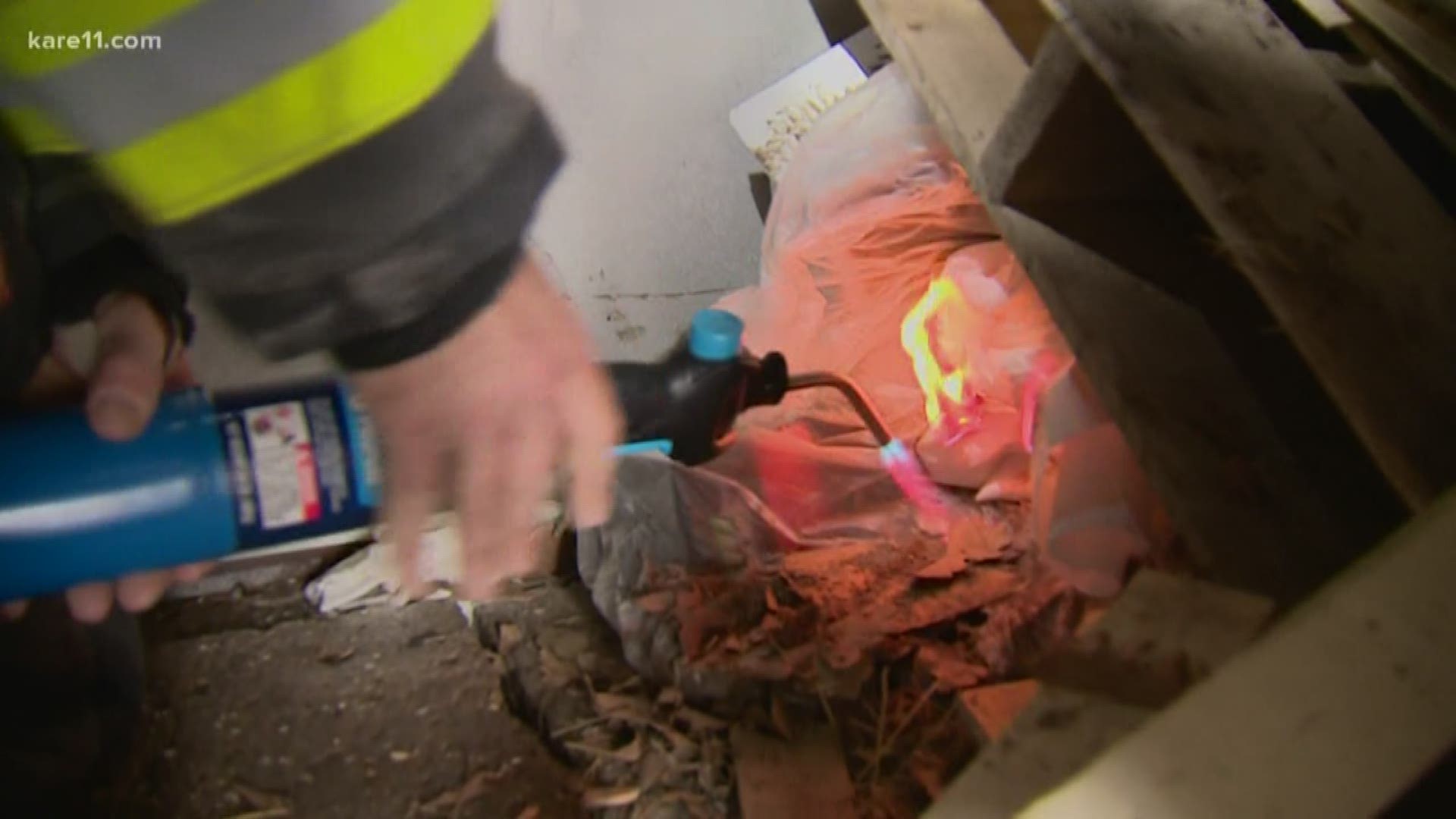Check out Part 1 of this story, on why house fires burn faster now, here.
We now know that fire is faster. That newer homes and furniture burn much more quickly than they used to.
You’ve also heard over and over again that you need working smoke alarms and carbon monoxide detectors, but there’s one thing, one piece of advice you might not know. And it could be the one thing that saves your life if you can’t get out of your home.
First, when it comes to a house fire, the thing you should worry about most in a fire is actually the smoke.
“It’s not the flames that kill people, it's the products of combustion,” says Eden Prairie Fire Chief George Esbensen.
So, for our second burn, we’re demonstrating how one simple thing can save your life.
Sleep with your bedroom door closed. The fire departments have created essentially a miniature two-bedroom home inside of a donated structure. We’re going to keep one bedroom door open and one closed.
"The fire is going to spread past the room with the door closed. That simple act of closing your door reduces the amount of carbon monoxide, reduces the heat in the room, and obviously reduces the toxic smoke,” says Asst. Chief Becki White.
“Just having that sealed area, so it stops airflow essentially, and that just buys you time for your local fire department to get there and render aid,” adds Chief Esbensen.
The fire department sets the fire in a small space that shares a wall with the closed-door room.
We set up cameras in both to watch what happens. Thirty seconds in and you can already see embers in the open-door room, then you see the fire. One minute in and the open-door room is filled with smoke.
In the closed-door room, closest to the fire, the air is still clean. Two minutes in, the smoke alarm stops working in the open-door room. And, by 3 minutes and 30 seconds after the fire started, the whole room goes dark.
“And, you can see in the closed-door room it's completely tenable, which is how we refer to it. Total survivable space right there,” says Asst. Chief White.
The firefighters go in to put out the fire. When it's safe, we go in to see the damage. First the room with the open door.
"Would anyone have survived in this room?” we ask. “No one would have survived in this room," says Asst. Chief White.
Right next door, a completely different outcome.
“So, if we close the door we can see that the door did its job and the fire and smoke just stayed on the seams,” says White.
“If you were in this room until the fire department came you would have survived?” we ask.
"Absolutely," she says.
The fire itself got to 1,200 degrees at one point, yet that thin wooden door kept it at bay. Oh, and just one more life-saving move.
"If you're in your bedroom at night, and you're trapped, turn the light on, because when we come and do our 360 it wouldn't be usual to see a light on at 2 o'clock in the morning, 3 in the morning, so we're going to go there first,” says Chief Esbensen.
Working smoke alarms, carbon monoxide detectors and a good family plan are all key. But, add sleeping with your door closed to your fire safety checklist. It’s just one more thing that could be the difference between life and death.

